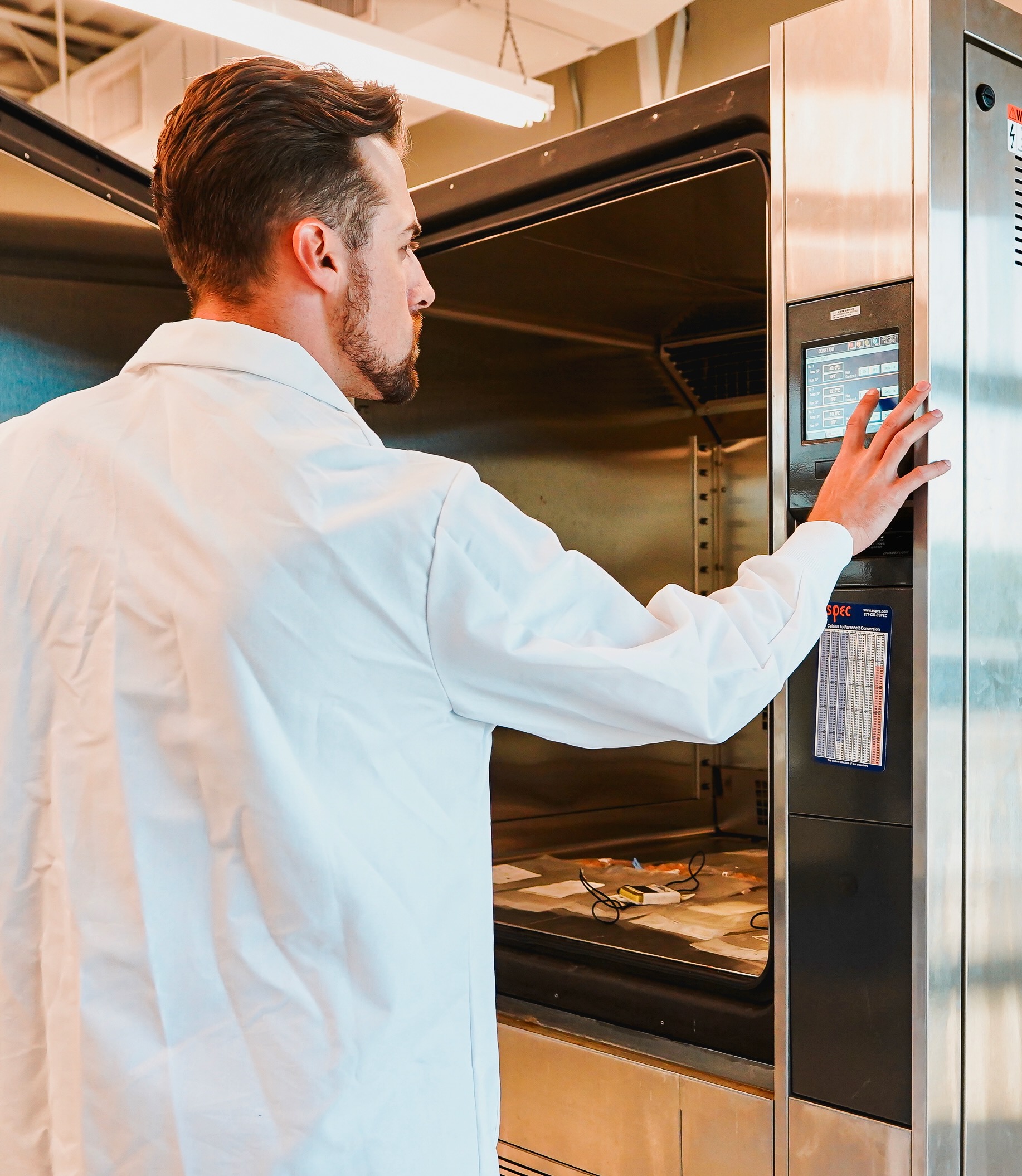
MaxQ & A with Tyler Rapp, Senior Solutions Architect for MaxQ
In his five years at MaxQ, Tyler Rapp has been involved in engineering packaging product development and manages MaxQ’s thermal testing operations. Tyler has designed customized solutions for a wide variety of cold chain applications including the transport and storage of blood products, specialty medications, vaccines, temperature-sensitive biologics, clinical trial programs, and more. He supports business development efforts by working one on one with customers to define performance requirements for their specific use case or payload. This includes everything from refrigerated or controlled room temperature (CRT) blood products and specialty medications, to ultra-low temperature (ULT) vaccines, clinical trial programs and more. Essential to the development of these products is the performance qualification process of MaxQ’s thermal packaging systems in a controlled laboratory environment – a role Tyler has mastered along with supporting customers with their internal validations.

In this Max Q & A, Tyler shares his experiences and knowledge about validations – common mistakes, observations and tips as well as how MaxQ can help make the process easier.
Q. What is the most common challenge customers face with their internal validation processes – and what’s your advice on overcoming them?
One of the biggest issues we see when our customers are struggling with validating their transport packaging systems or storage coolers is not pre-conditioning data loggers in the same environment as the payloads prior to testing. We always recommend attaching data loggers to the intended test payloads the night before testing or a minimum of 12 hours. You can do this by using a rubber band or packaging tape to affix the logger(s) to the payload(s). Allowing the data logger to sit in the refrigerator/freezer with the payload will ensure that the starting temperatures of both the loggers and payloads are equal at the start of the validation procedure and help avoid false negative test data.
Q. Do you have a pre-validation checklist you share with customers?
Yes, we recommend that customers maintain a logbook for documenting and tracking validation tests, perform an inventory check on testing materials prior to testing, verify that starting temperatures are in the appropriate range and take some time to familiarize themselves with the system by practicing the packing process before attempting a formal validation test.

Log your validation procedures: Customers can keep a record of each test they run in a notebook or spreadsheet; it doesn’t matter which. Key information to capture includes the date and time, testing personnel, system being tested, payload volume being tested, data logger type and location within the system, payload and coolant preconditioning temperatures – along with anything else that might be helpful for future validations and troubleshooting.
Double check all materials before beginning a validation: Just like meal preparation, it is critical that you have all the ingredients ready prior to beginning the validation procedure. There is nothing more frustrating than getting started with a validation test and realizing there isn’t enough product available, or someone incorrectly preconditioned coolants and or payloads. Double check that all system components are available and that they are conditioned appropriately before starting any validation.
Confirm the product’s starting temperature is in a realistic range to simulate actual use. Prior to starting the validation, power on the data loggers and confirm the product temperature is acceptable. As an example, it’s unproductive to begin a 1-6oC refrigerated blood storage validation if the mock blood products are too hot or too cold at the outset.
Develop a reasonable packing pace. It’s important to understand the packing process prior to starting a validation to simulate the real-world pace of a trained packing personnel. Hence it is always a good idea to review the provided validation SOP/documentation and practice the packout the day before validation to familiarize yourself with the packing process.
Q. What kind of guidance does MaxQ provide?
Every cooler designed by MaxQ undergoes rigorous testing and performance evaluation during the engineering development process. Our packaging and storage systems come complete with an auditable Design Qualification (DQ) report and validation packout instructions. These two documents cover system specifications, user instructions, test methods, use cases and the actual performance data collected by the MaxQ thermal engineering team in our thermal laboratory. The documentation is an excellent guide that helps ensure customers can confidently validate the systems in-house without third party support.
Q. What if a customer is having trouble validating their thermal transport or storage system?
A test engineer from MaxQ’s engineering team can be assigned to work one-on-one with the customer to assess their validation procedures, and help resolve the issue if necessary.
Q. How else does MaxQ support customers with temperature testing and qualification?
With a full-service thermal laboratory equipped with NIST-traceable environmental testing chambers and data logging equipment, some customers outsource their qualifications to MaxQ.

It is not unusual for customers in blood centers or the clinical trials industry to contract MaxQ to perform formal Operational Qualification (OQ) testing that is specific to their application. MaxQ conducts triplicate testing on a specific product to prove consistent thermal performance. An audit-ready report is provided, documenting all test methods, components, procedures, certifications and raw performance data.
Q. Is there anything else you think hospitals, blood banks, diagnostic testing labs, specialty pharmacies and clinical trial programs need to know?
I’d say when it comes to validating or qualifying thermal packaging systems for a particular product – there’s one overarching theme to follow: preparation, preparation, preparation.
Resource
Many people are confused by the difference between validation of a process or method, and qualification of an asset like packaging. Tyler recommends this article published by Vacker: “What is the Difference Between Qualification and Validation in the Cold Chain?”

